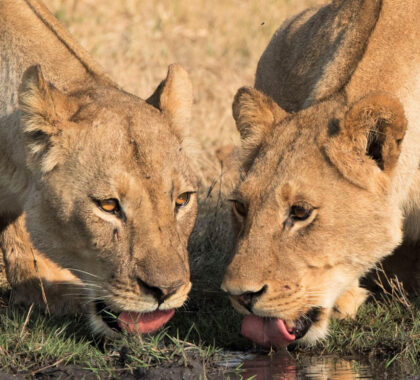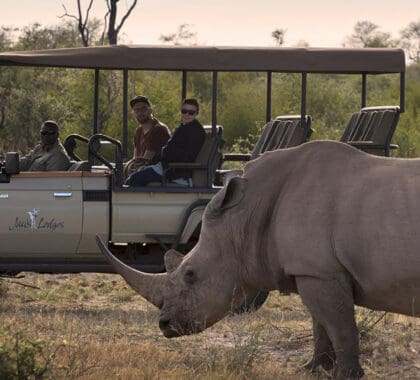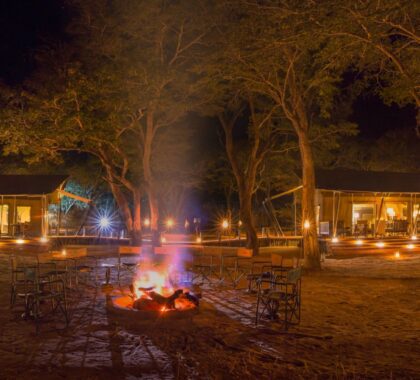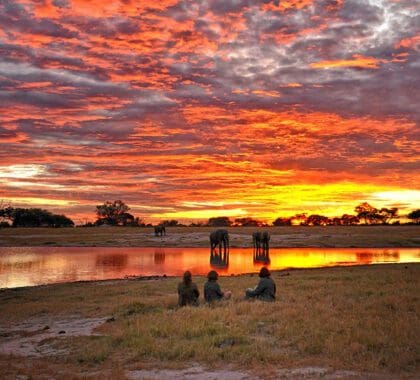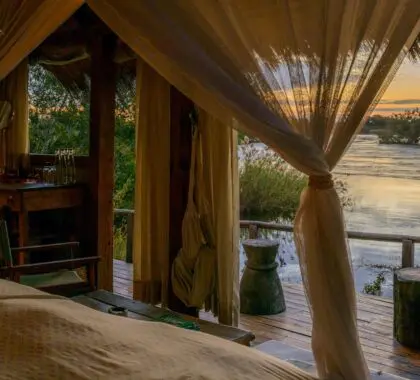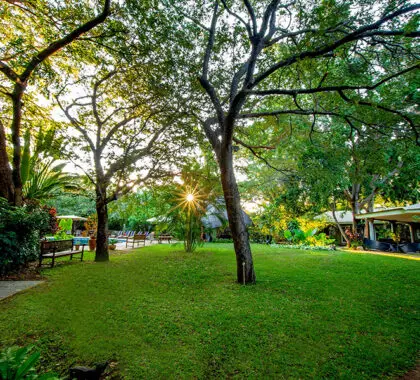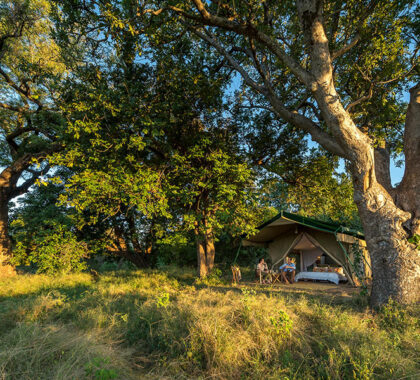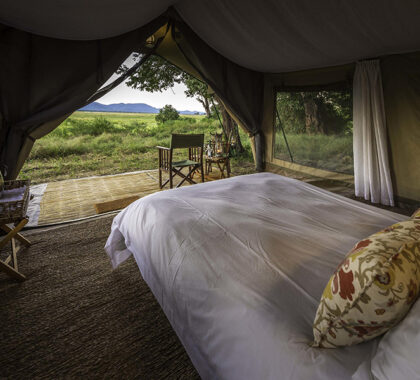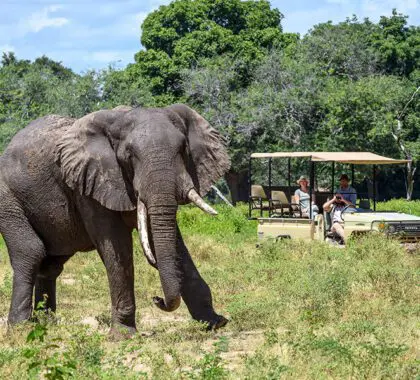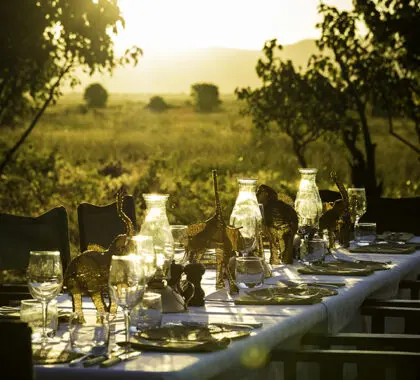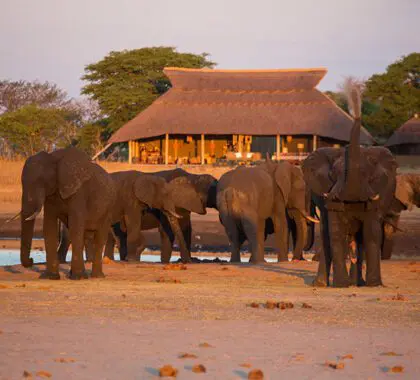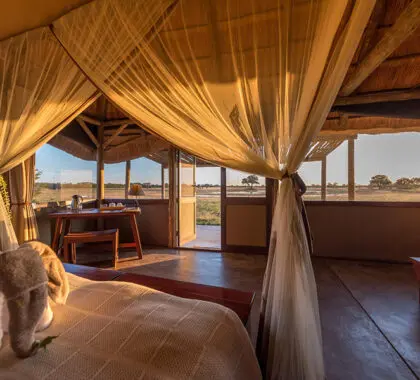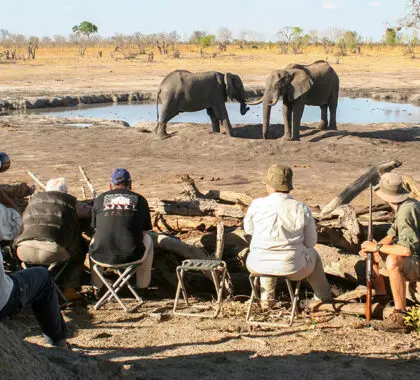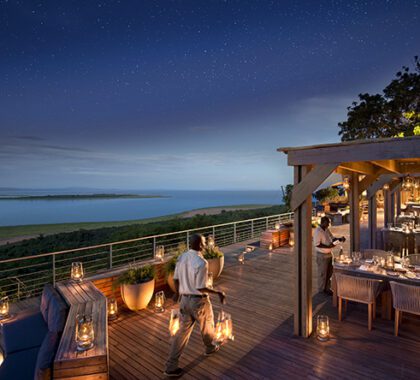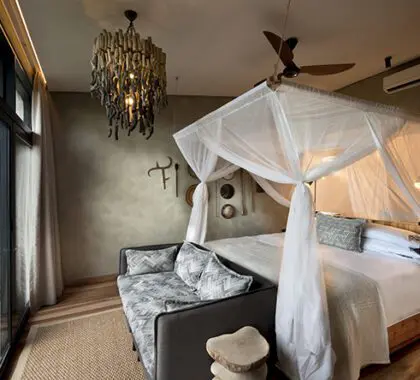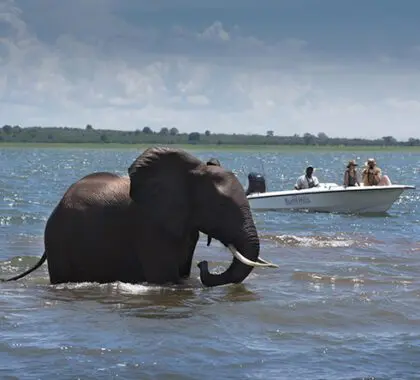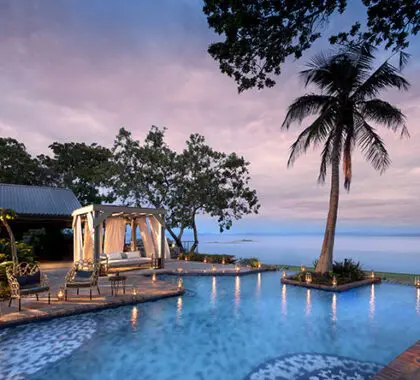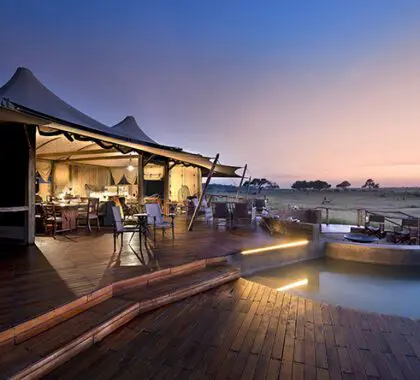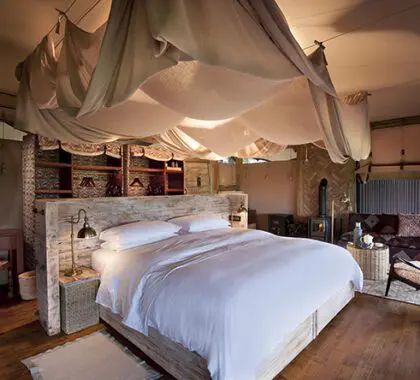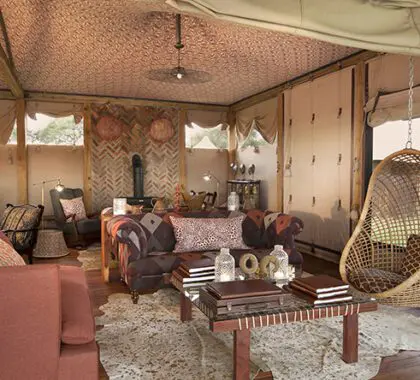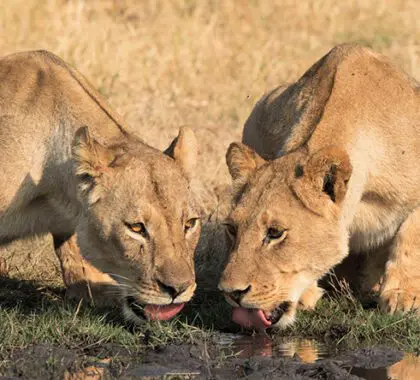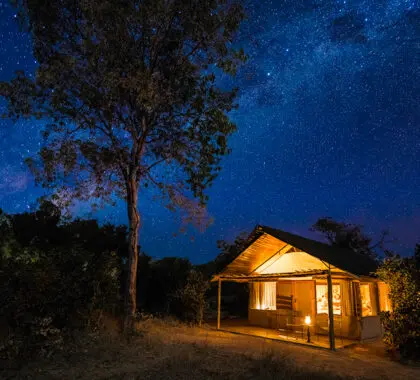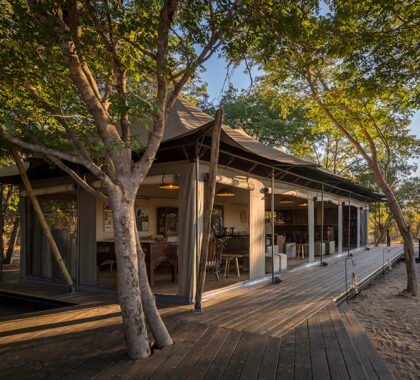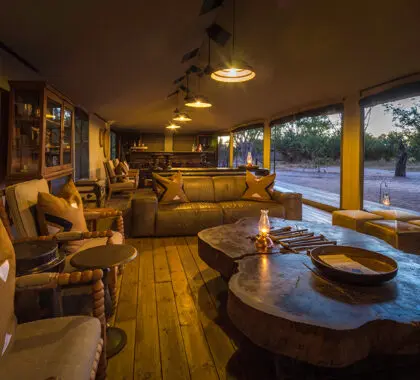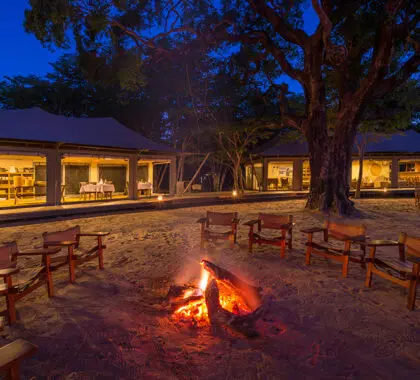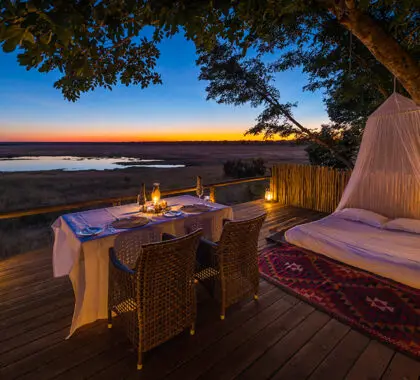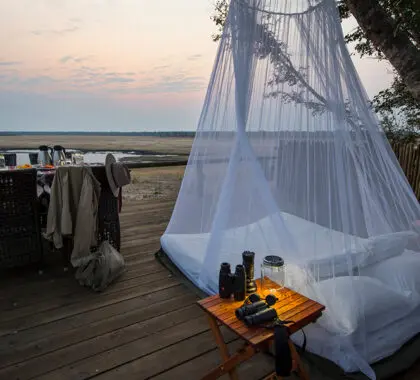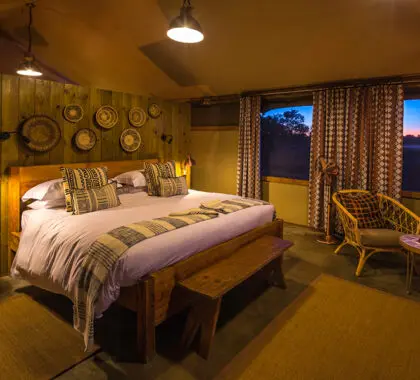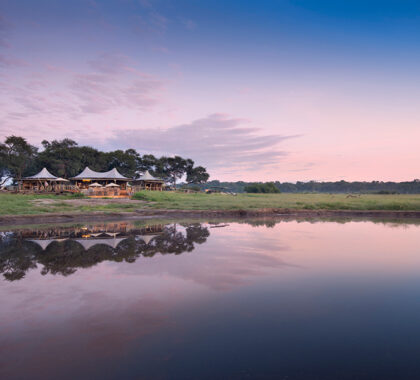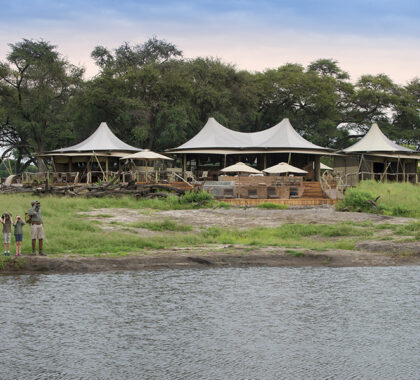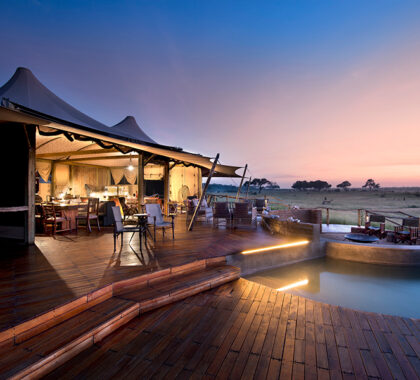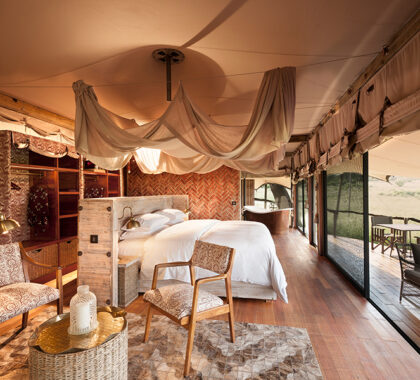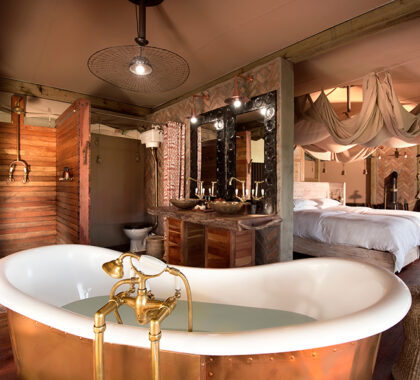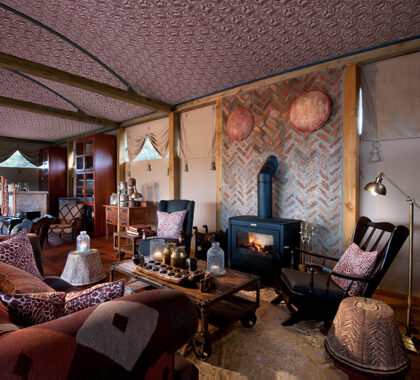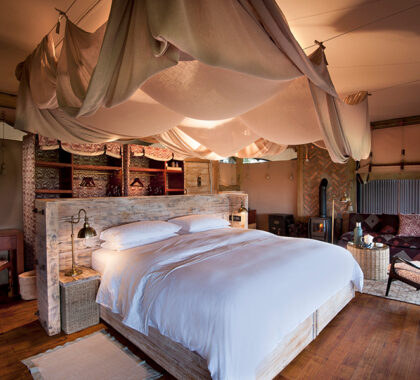Estimated reading time: 15 minutes
Hwange National Park is lauded as the best, and largest, park in Zimbabwe with 15 000 square kilometres (9 320 miles) just waiting to be explored. Its location on the edge of the Kalahari Desert gives the park a selection of diverse landscapes and a semi-arid climate. Supreme beauty aside, the animals found in Hwange National Park are typically the biggest lure – from the thunder of elephants and the rumbling roar of lions, to the carrying cackle of hyena and the chorus of endless birdsong.
With such an expansive area to explore, there are ample things to do in Hwange National Park. Whether you decide to undertake all of them and discover as much of the park as possible, or focus primarily on game viewing and enjoy a peaceful safari sojourn is completely up to you. To ensure it’s an informed decision, allow us to share a list of the top Hwange National Park activities:
Diverse Wildlife
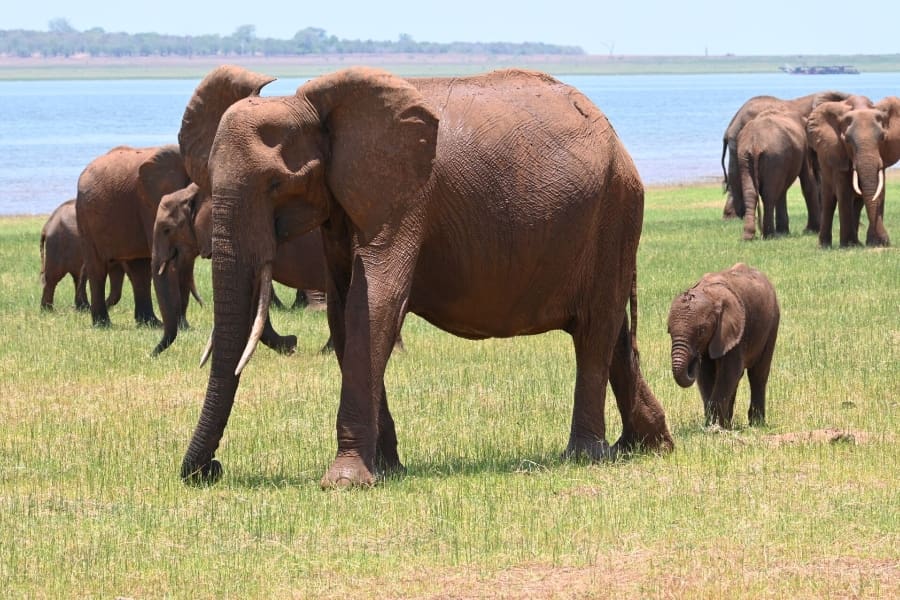
Given the size of Hwange National Park, the sheer number and variety of wildlife should come as no surprise. Around 100 mammal species roam the land while 400 odd aviary species commandeer the skies. One of the largest, and most seen species are the Hwange National Park elephants; with numbers between 45 000 and 60 000, the park’s population is second only to neighbouring Chobe National Park.
The dry season (May to November) make for the easiest sightings – as verdant shrubbery shrink, wildlife are easier to spot and tend to congregate around water sources. In addition to the natural surface level water, Hwange is supported by manmade waterholes, which the park would struggle without. At present, there are around 60 waterholes found throughout, some natural, some pumped.
Now to the residents occupying the park; Hwange enjoys a high concentration of wildlife and therefore offers visitors fantastic diversity. Sightings can include anything from the desert-adapted brown hyena and one of the most prolific wild dog populations to safari staples such as giraffe, zebra, kudu, impala, and even the elusive sable and roan antelope. From the healthy predator population, expect to see the Hwange National Park lions and even cheetah to lesser sighted wildlife like the nocturnal civet, bat-eared fox, and serval.
While the Hwange National Park wildlife population technically includes every member of the Big 5, its rhinos are not free-roaming and are under the protection of the Community Rhino Conservation Initiative.
A Thriving Birding Population

Hwange National Park is a twitcher’s paradise, with over 400 recorded aviary species. Typically, birdwatching is best during the green season (November to April), but Hwange enjoys sensational year-round sightings due to migratory species such as the carmine bee-eater.
Keep an eye out for Africa’s largest flying bird, the kori bustard, and the similarly-sized secretary bird. Colourful sightings such as the lilac-breasted roller and racked-tailed roller make for fantastic photographic opportunities against the reserve’s striking landscapes. Other aviary species to keep an eye out for include the fork-tailed drongo, Meyer’s parrot, Arnot’s chat, yellow-billed kite, red-backed shrike, and one of two cuckoo’s.
Immersive Walking Safaris
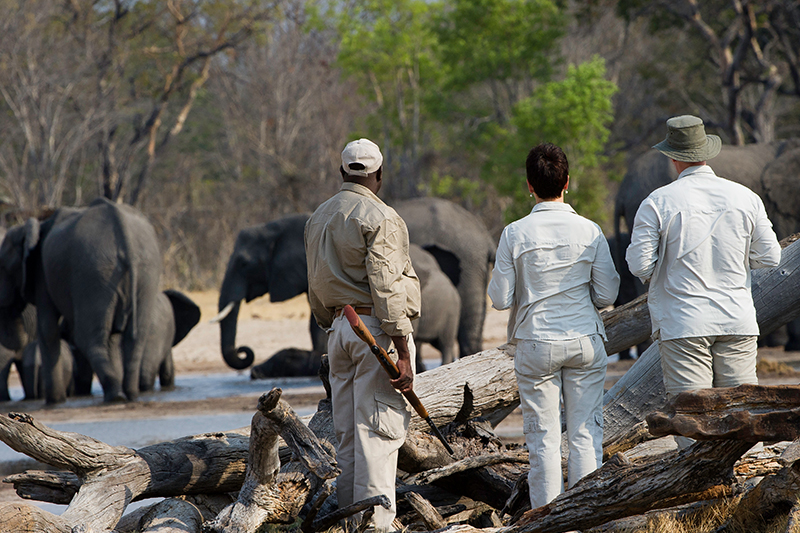
Venture out into the bush on a Hwange walking safari for a unique perspective on the reserve’s wild residents. Accompanied by a knowledgeable guide, embark on an engaging walk through the park to discover the small, intricate details of the surrounding bush. Follow fresh prints, learn about fascinating flora, and track the snapped branches of elephant herds.
While all wildlife is given the space and respect they are due, a walking safari often provides the opportunity to get a closer look at some of the more reserved species. Without the rumble of a diesel engine, it’s easier to go through the bush undetected.
The length and depth of each walking safari varies greatly on the desired experience, be it a multi-hour excursion filled with fascinating information, or more of a relaxed nature walk with an informative overview. Some of the best Hwange National Park lodges and camps offer a selection of both.
Walking safaris are technically possible year-round, the winter months make for a more comfortable clime, and better sightings. From June to October, wildlife begins to congregate around water sources and the vegetation is less lush and obstructive. As the months progress, the temperatures begin to rise, especially given the park’s proximity to the Kalahari, making late June to late August the optimal time for a walking safari.
Unforgettable Game Drives
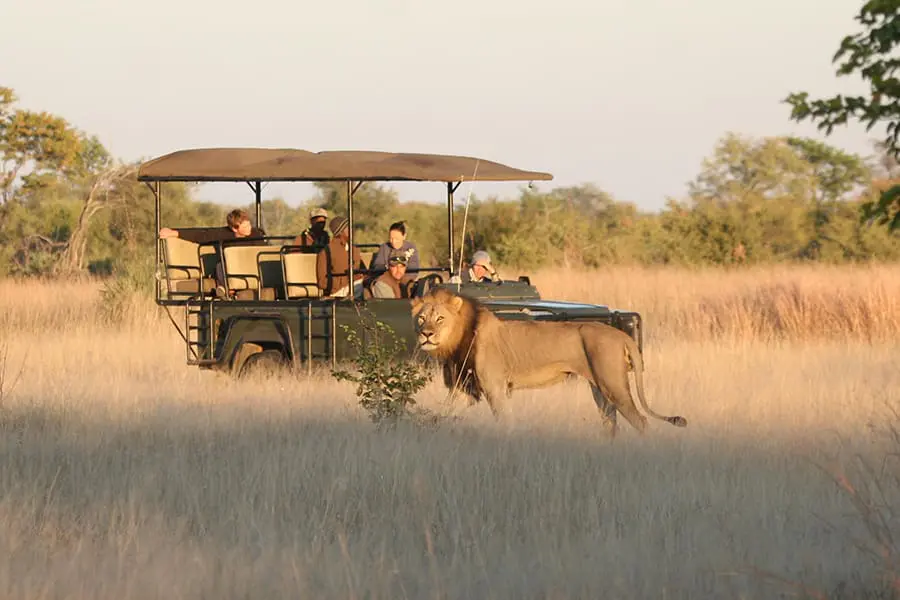
As one of the most rewarding big game safari destinations, it simply would not be a Zimbabwe safari without an unforgettable game drive. Hwange National Park is not only lauded as Zimbabwe’s flagship reserve, but one that offers night drives. Listen for the roar of lions, the chattering of crickets, and the hoot of owl while searching for hyenas, nocturnal cats, and the rarely spotted aardwolf, aardvark, and pangolin.
During the day, listen out for the sound of branches breaking and the trill of trumpeting, announcing the arrival of African giants, the elephants. Watch as wildlife graze and converge near the waterholes where hippos wallow in the shallows. Expect to see safari staples such as buffalo, giraffe, zebra, spotted hyena, roan antelope and eland as well as special surprises in the Hwange National Park wild dogs.
Hwange National Parks is also one of the reserves which has seen an increasing number of electronic, solar-powered game vehicles resulting in ‘silent safaris’. Not only is this a more sustainable and eco-friendly option to game drives, but provides some excellent sightings as wildlife are less startled.
Spectacular Landscapes
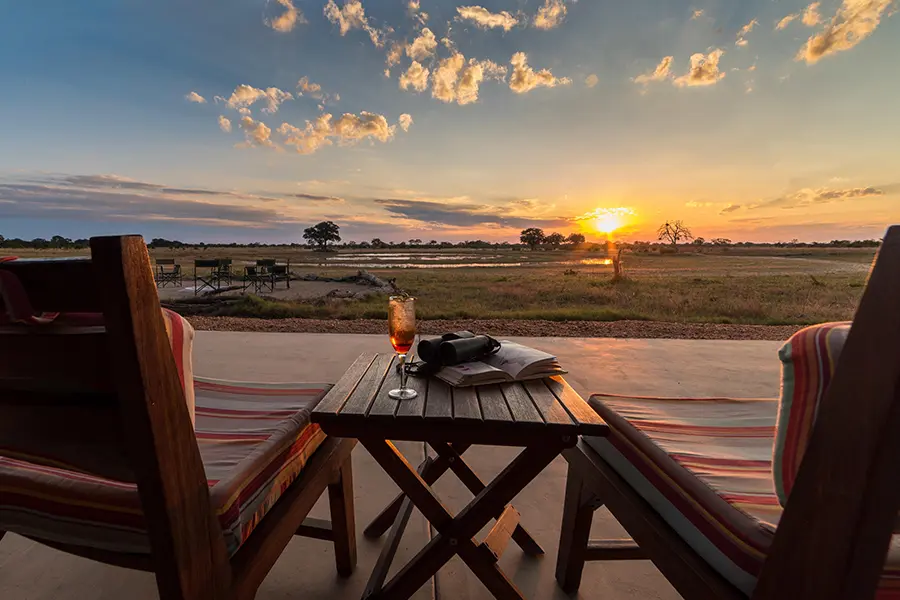

The park is famously divided into two distinct ecological zones, the semi-arid desert to the south and the mopane valley and woodlands to the north. That, in addition to the marked seasonal changes and climates, makes Hwange National Park the ideal host for a staggering array of flora.
During the wet summer months (December to April), the park bursts into life with lush greenery, colourful flowers, new births, and birds aplenty – it’s a twitcher’s dream. In contrast to the green season, the dry months (May – November) feature less shrubbery and a higher concentration of wildlife as they seek consistent water sources. It’s granite koppies, leadwood pans, and diverse wild- and birdlife populations make Hwange a dream destination for amateur and professional photographers alike.
A Day Trip to Victoria Falls
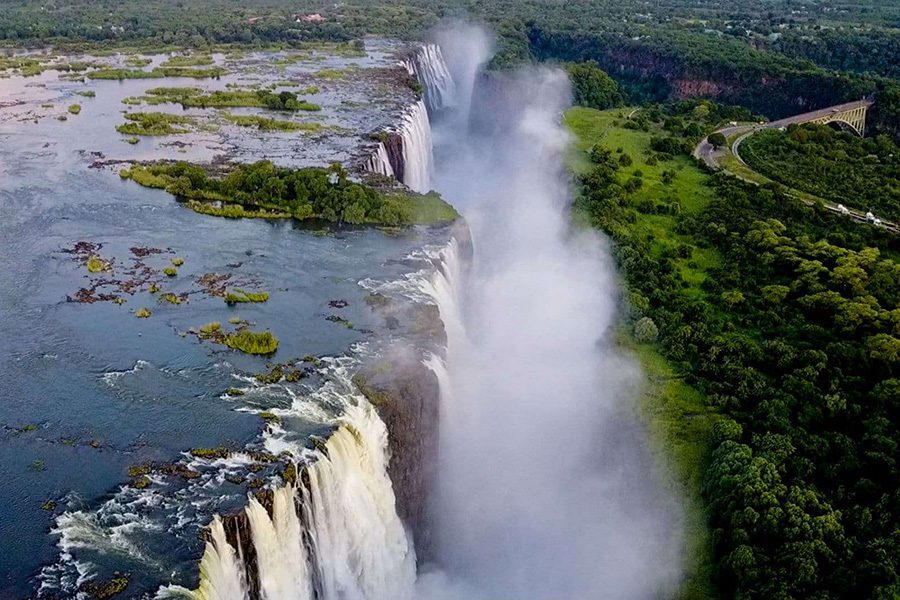

Add a different experience to a typical Zimbabwe safari with a day trip to nearby Victoria Falls. Not only is it a world-renowned UNESCO World Heritage Site and listed as one of the World’s Seven Natural Wonders, it is also the world’s largest waterfall at 108m tall and a staggering 1708m wide. Its local Batonga name ‘Mosi-oa-Tunya’ translates to ’The Smoke that Thunders’, which is immediately understandable upon arrival with great plumes of spray.
When visiting, venture to the skies in a helicopter for a trip dubbed ‘The Flight of Angels’ and observe the expansive falls from above. Take a walking tour along the well-marked paths around the floors for a land’s eye view of the thunderous falls – don’t forget to bring or buy a poncho to stay dry! For the adventurers and brave of heart, take a guided dip in Devil’s Pool on the very edge of the waterfall (only available during dry season).
Other enticing activities include a stroll along the underside of Victoria Falls Bridge, which connects Zambia’s Livingstone and Zimbabwe’s Victoria Falls. Adrenaline junkies are invited to take the plunge in an exhilarating bungee jump, or the more tame ‘Big Swing’. The town also offers some lovely shops, the perfect spot to purchase a memento and support local businesses. Bring the day to a tranquil close with a sunset cruise along the Zambezi River.
A Night Under The Stars
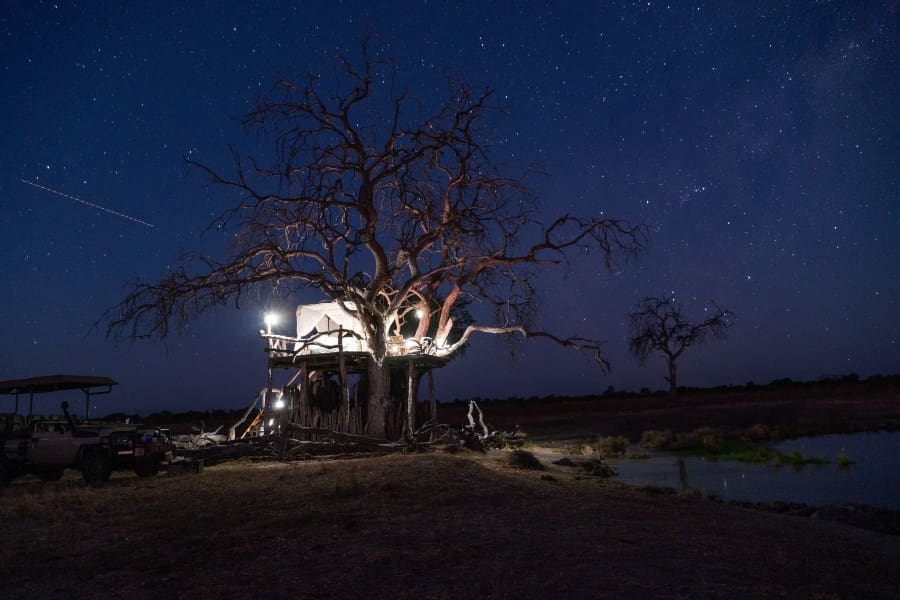

A handful of accommodations in Hwange National Park offer the incredible opportunity to sleep out under a star lit sky. Experience the closest thing to outdoor camping in the bush with a sleep out deck – usually found 10 to 20 minutes from the main camp or lodge. A raised platform with a spacious bed and mosquito nets provides a cosy escape.
Enjoy sundowners on deck as the sun sinks below the horizon and the night chorus begins. After a restful sleep in the fresh African air, wake with dawn’s song and the first rays on the sun with some tea or coffee. While it feels as though there is no one for miles, a guide is usually nearby and radio contact with the camp is always possible if the security of four walls beckons. A great example of this is Somalisa Camp and their Ray’s Pan Deck found just 20 minutes from the main camp.
Visiting Bumbusi Ruins
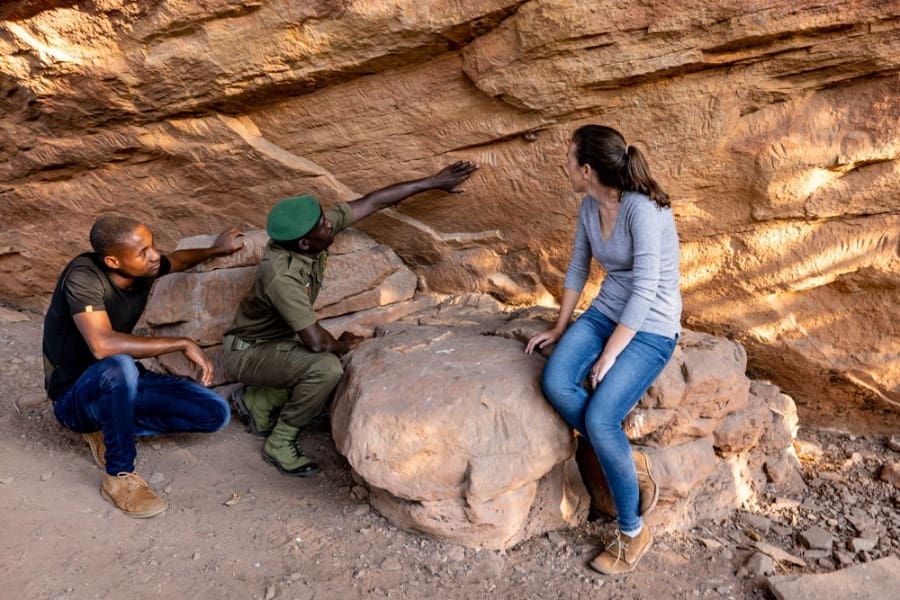

Located around 40kms from Hwange, the Bumbusi Ruins, also known as the Bumbusi National Monument, are a collection of stone walls, platforms, and remaining ruins of dwellings. In addition to the remaining structures, the site is also home to rock engravings in large blocks of sandstone. Found in three distinct spots, the engravings depict the spoor (tracks) of various wild animals, and even human feet. However, not all of them are immediately recognisable, for example, some show lion tracks with five toes.
Step back in time and learn the history and cultural link to the structures as an excellent addition to a Hwange National Park safari. The site has been added to the 100 Most Endangered Sites by the World Monuments Fund due to threats to the site by wildlife and the natural fragility of the sandstone construction.
The Painted Dog Conservation Centre
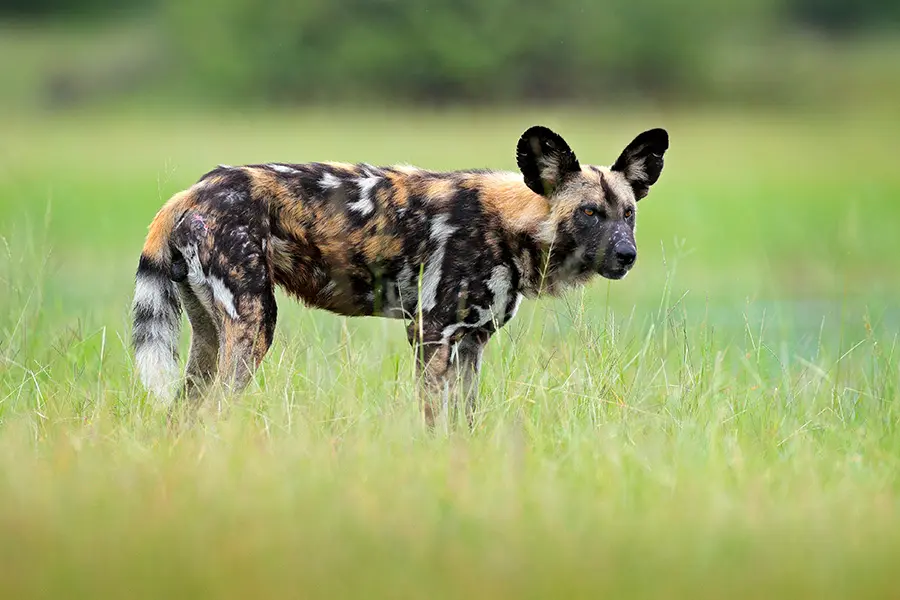

While the centre may not be located in Hwange National Park, it’s ideally located for a visit on the way to, or from, the reserve. The conservation initiative works to educate and aid surrounding communities while making a tangible difference to the painted dog population in Zimbabwe.
Sadly, African wild dogs are listed as an engendered species, but various organisations around Africa have been working to stabilise, and slowly increase numbers. As poaching snares are one of the core threats to the dogs, an Anti-Poaching unit made up of highly skilled scouts patrol Hwange National Park borders on a daily basis. The teams also work closely with Zimbabwe Parks & Wildlife Management Authority and Forestry Commission.
Packs are monitored and a Rehabilitation Facility takes in injured, sick, or orphaned dogs with the sole aim of restoring them to health and releasing them.
Combine Hwange With Other Zimbabwe Big Hitters
Hwange National Park may be one of the crowning jewels of Zimbabwe National Parks, but it is not the only precious gem in its crown. Consider combining Hwange National Park safari tours with one of the other safari big hitters in the area. Here are a few neighbouring national parks which would make a fantastic addition:
Mana Pools National Park
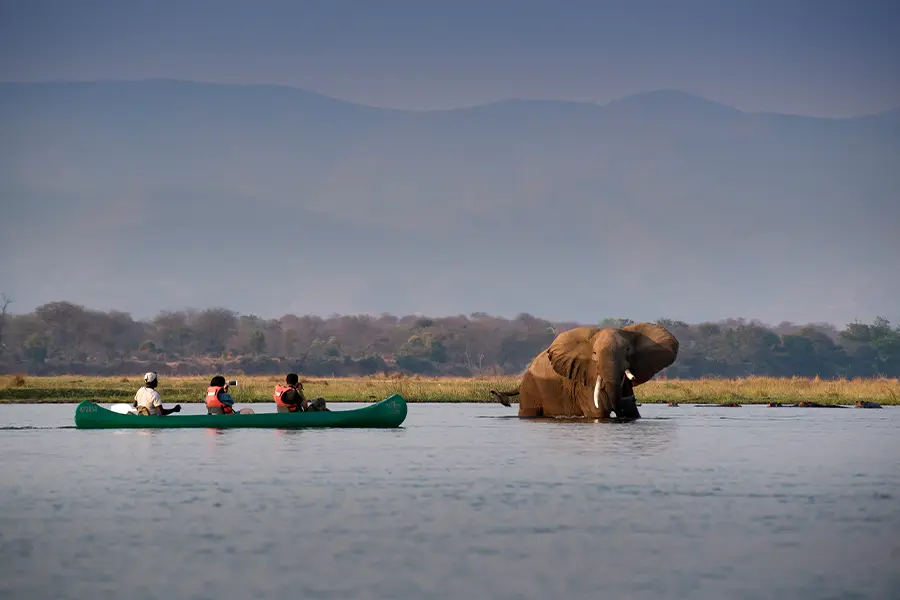

With its reputation as one of the most beautiful reserves in the world, Mana Pools National Park is affectionately dubbed as the ‘The Golden Child’. Its proximity to the Zambezi River, and the large pools fed by it, make it a wildlife haven and the perfect place for water-based safari activities. It’s also lauded as one of the best places to see the endangered wild dogs in Southern Africa.
Matobo National Park
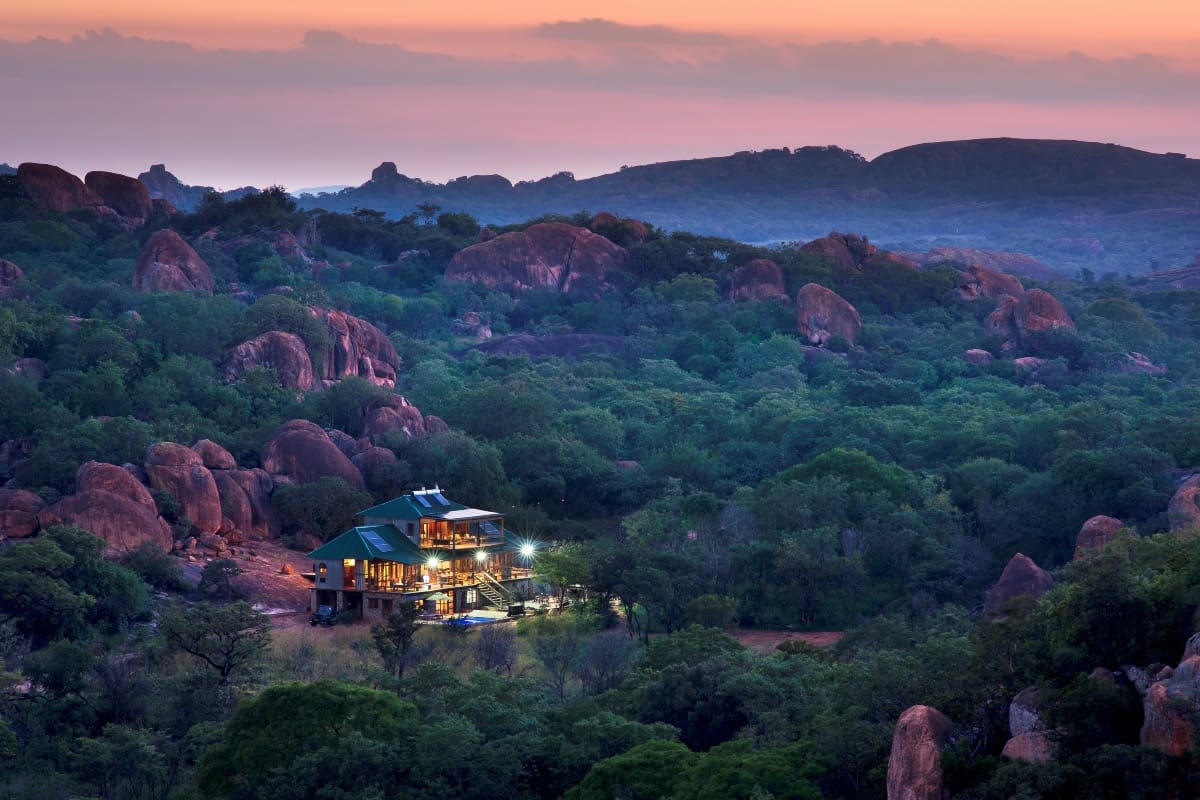

Matobo may be one of the smaller and less well known reserves, but is still a sensational safari destination. Its Jurassic-like landscapes filled with fascinating domes, spires, and balancing rock formations, make it a feast for the eyes. The reserve also features an Intensive Protection Zone for endangered rhinos, which form part of the extensive wildlife population.
Matusadona National Park
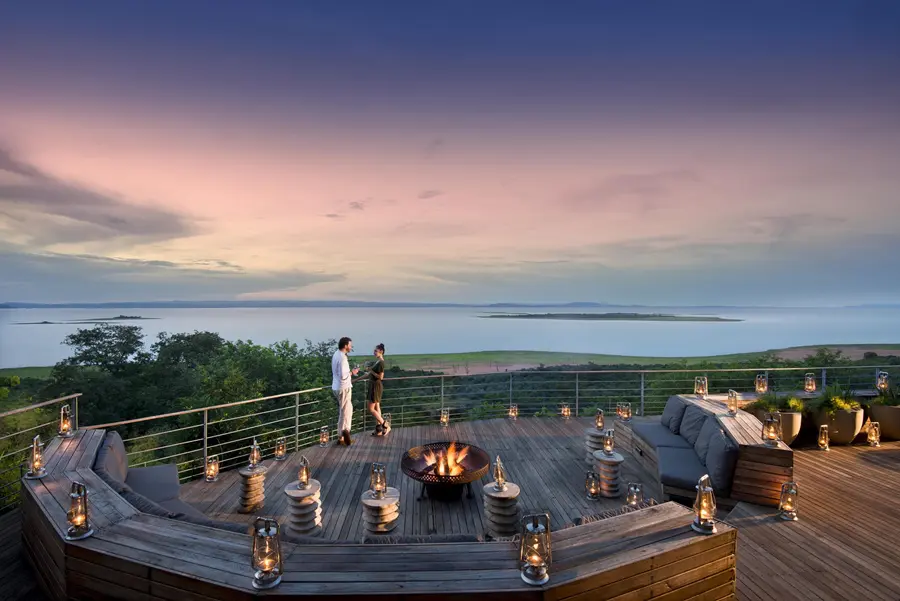

Located on the lush shores of Lake Kariba, this remote wildlife haven is only accessibly by light aircraft, boat, or 4×4 convoy. A combination of verdant floodplains and more rugged hills make an ideal environment for an array of wildlife including some of the biggest elephant and buffalo herds. Other tantalising sightings include leopards, cheetahs, and spotted hyenas to name a few.
Gonarezhou National Park


Off the beaten track and less visited, but no less exceptional. Its calling card are its famous Chiloko Cliffs – a spectacular backdrop when spotting or photographic wild- and birdlife. With its name translating to ‘Place of Many Elephants’, it’s no surprise that guests enjoy ample sightings, in addition to other members of the infamous Big 5.
Little Makalolo
Activities Travellers Enjoyed
Somalisa Acacia
Activities Travellers Enjoyed
Elephant's Eye, Hwange
Activities Travellers Enjoyed
Ready to Start Planning Your Ultimate Hwange Safari?
We’ve covered the best things to do, what you will see, and even some combination ideas, so all that’s left is to experience it all for yourself. Prepare to discover the land of giants and spectacular landscapes of Hwange with the assistance of an African Safari Expert, chat to one them about tailor-making your dream Hwange safari:

